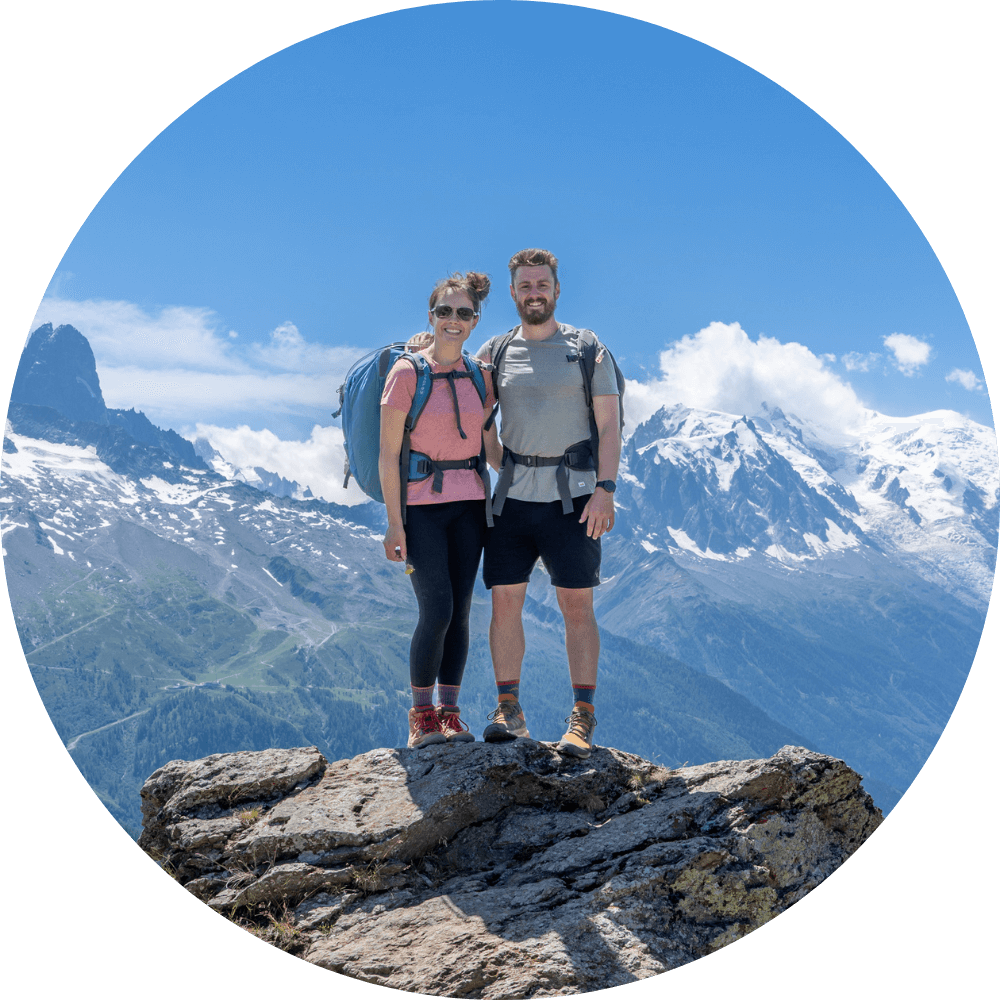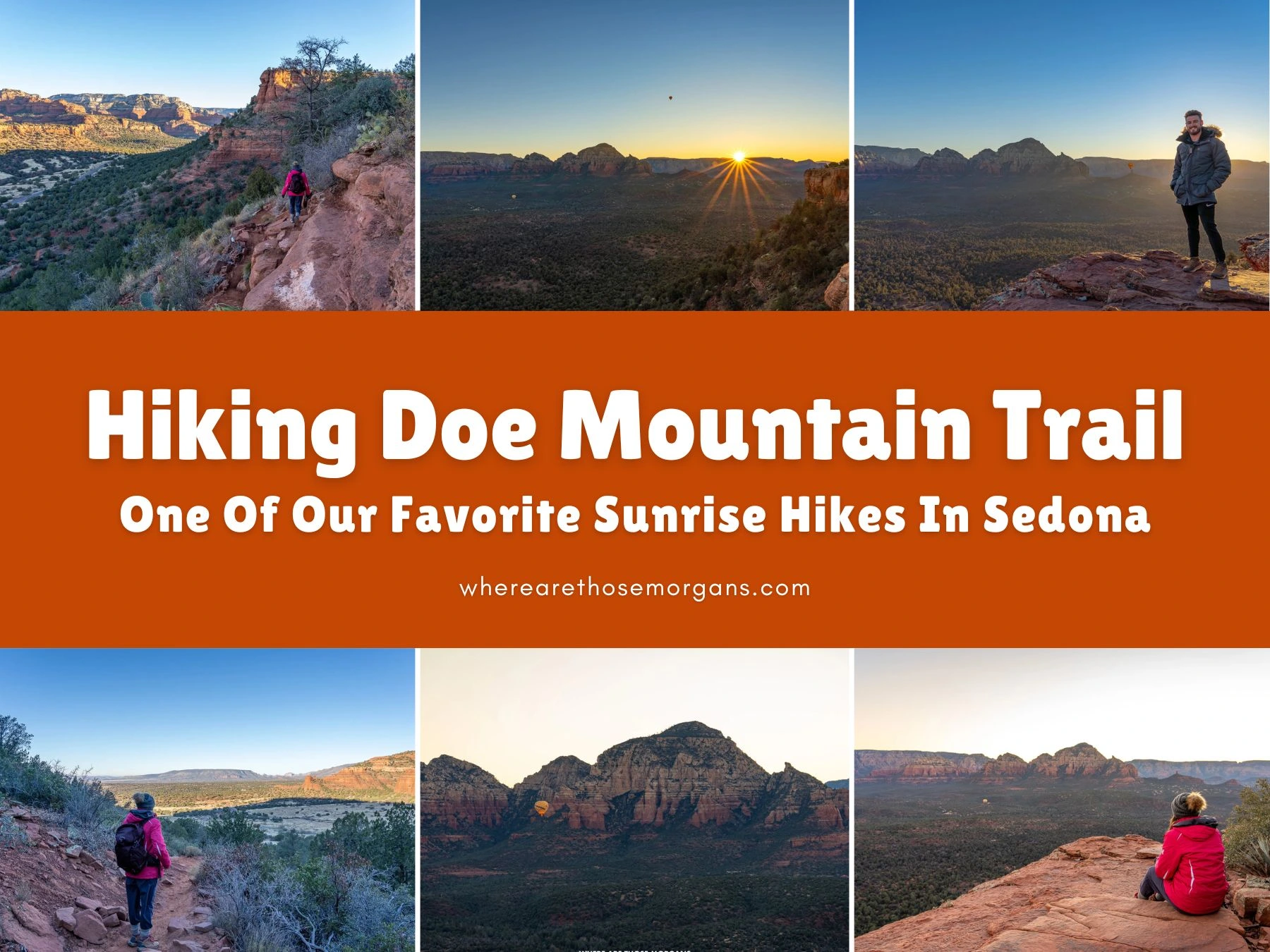Our alarm went off at 6:00 AM, we threw our hiking gear on, filled our flasks with hot coffee and grabbed snacks for breakfast, hopped in the car and drove 7 miles from our West Sedona hotel to Doe Mountain Trailhead. It was December 11th and sunrise was at 7:24 AM, but we wanted to be sat at the summit during civil twilight so we definitely didn’t miss the spectacle.
We were the first car to arrive in the parking lot, so we knew we’d have the top to ourselves. It was also a freezing cold morning, so we kept our heavy winter coats on. Headlamps lighting the way, backpacks on, camera strapped, we quickly hustled up the steep and narrow zig-zagging 0.75-mile path with 400 feet elevation gain to the flat table-top mesa – and we made it time to watch a magical sunrise erupt over Sedona.
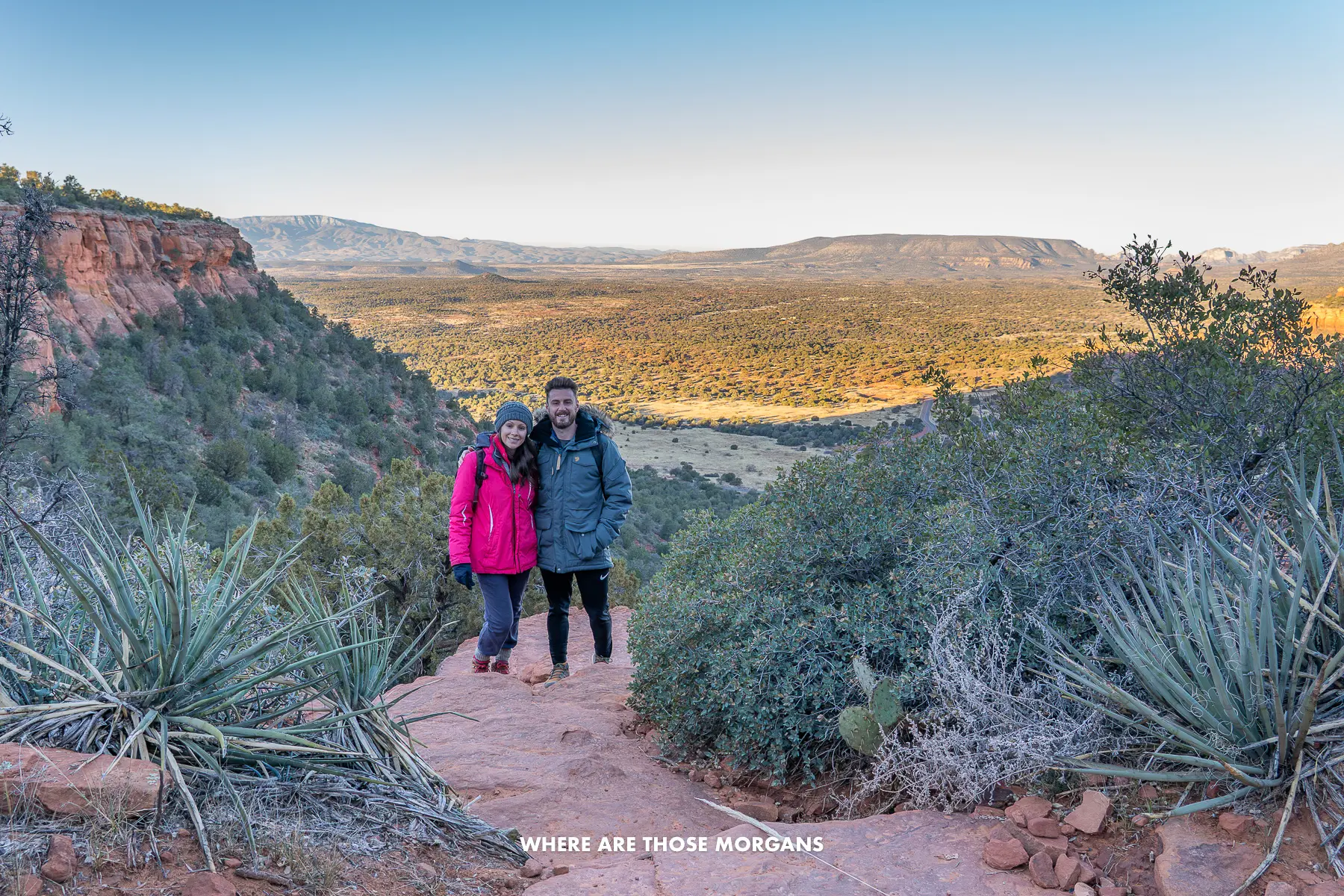
Hi, we’re Mark and Kristen Morgan. We left our scientific careers in 2018 to become travel writers and photographers, and since then our expert guides have helped millions of travel planners take better trips. Read more about us.
Why trust us with your Doe Mountain hike? We personally hiked to the flat mesa summit during our 8-day trip to Sedona and watched a stunning sunrise. We know the trail well. As always, every photo in this guide is ours.
It was our first time visiting Sedona, and we’d already hiked both Devils Bridge (which we thought was overhyped) and Cathedral Rock (which we loved) for sunrise. They were both busy at dawn, but the less popular Doe Mountain was empty and the sunrise views were better. It was easily one of our favorite hikes in Sedona.
We sat near the rocky edge of the summit mesa huddled up in our winter coats with hot steaming coffees as the sun burst into the sky directly ahead of our east facing view, right as hot air balloons were taking flight in the valley below us. It was such a cool experience, and we’d definitely hike it for sunrise again next time. In this guide we explain everything you need to know about hiking Doe Mountain Trail, based on our experience. Let’s dive in.
Note: Our content is reader supported and contains affiliate links. If you make a purchase through one of these links, we may earn a small commission at no extra cost to you and it helps us keep this site running.
SEDONA Planning
📖 Ultimate Sedona Guidebook: Get our complete 50+ page offline PDF with everything you need for Sedona.
📞 Personalized Sedona Planning Call: Book a 60 minute call with Mark to have your questions answered, optimize your itinerary, avoid tourist traps and get our best insider tips.
💡 Still Planning? Read our essential first-timer’s guide to visiting Sedona.
Trail Map + Key Information
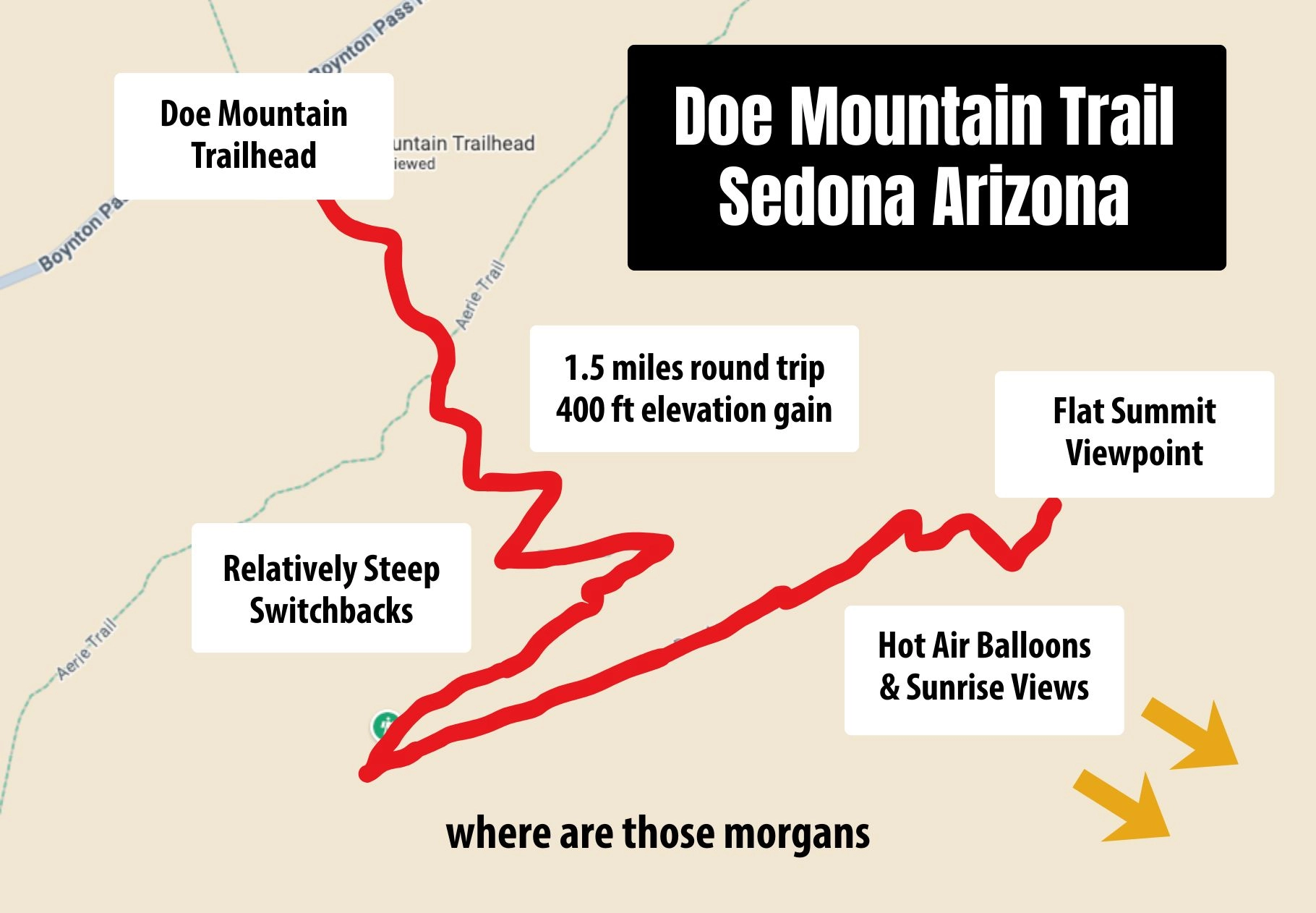
Map Key
- Red line: Trailhead to summit path
- Orange arrows: Sunrise and hot air balloons
Hiking Statistics
- Distance: 1.5 miles round trip
- Elevation Gain: 400 feet
- Difficulty: Moderate
- Time: 2 hours
- Trailhead: Bear Mountain / Doe Mountain
- Pass: Red Rock Pass or Interagency Pass
- Best Time: Sunrise (or sunset)
Doe Mountain Trail scores a strong 4.8 out of 5 star rating on AllTrails, and our experience at sunrise absolutely validates that score. We rate the difficulty as easy-moderate compared to others in Sedona. It was short, but the elevation gain was fairly steep and the path was very narrow in places. Honestly, we think it’s suitable for most people – just be prepared for a bit of a lung-busting climb.
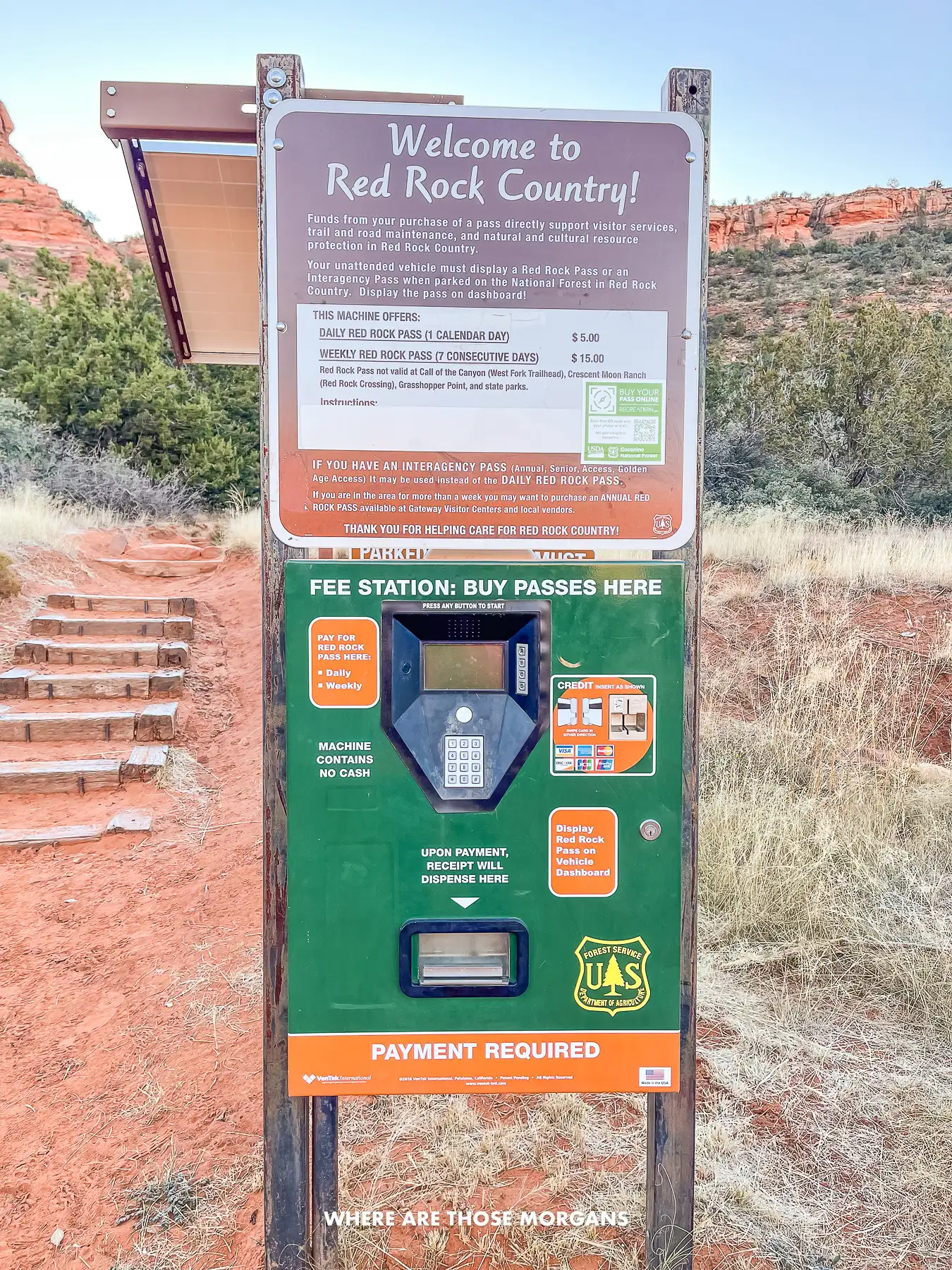
A Sedona Red Rock Pass or Interagency Pass (America the Beautiful Pass) is required for parking. If you don’t have an Interagency Pass, you can buy a 1-day ($5) or 7-day ($15) Red Rock Pass at a ticket machine in Doe Mountain Trailhead parking lot. Better yet, buy one online in advance at recreation.gov so you don’t have to figure it out at the trailhead. We used our Interagency Pass for parking at most trailheads in Sedona, which was a nice bonus for the $80 pass that also got us into tons of US national parks that same year.
You can hike any time of day for stunning summit views on this hike – as long as the weather is clear. But after doing it for sunrise, we would 100% do it at dawn again next time. Sunset would be our next choice, but it wouldn’t be as good because the sun is behind instead of ahead, and parking would be challenging instead of easy.
Trail Walkthrough
Here’s our entire sunrise hike step-by-step, so you know exactly what to expect.
1. Parking At The Trailhead
We were the first car to arrive at the shared Bear Mountain and Doe Mountain Trailhead parking lot, just as the darkness was beginning to fade into civil twilight.
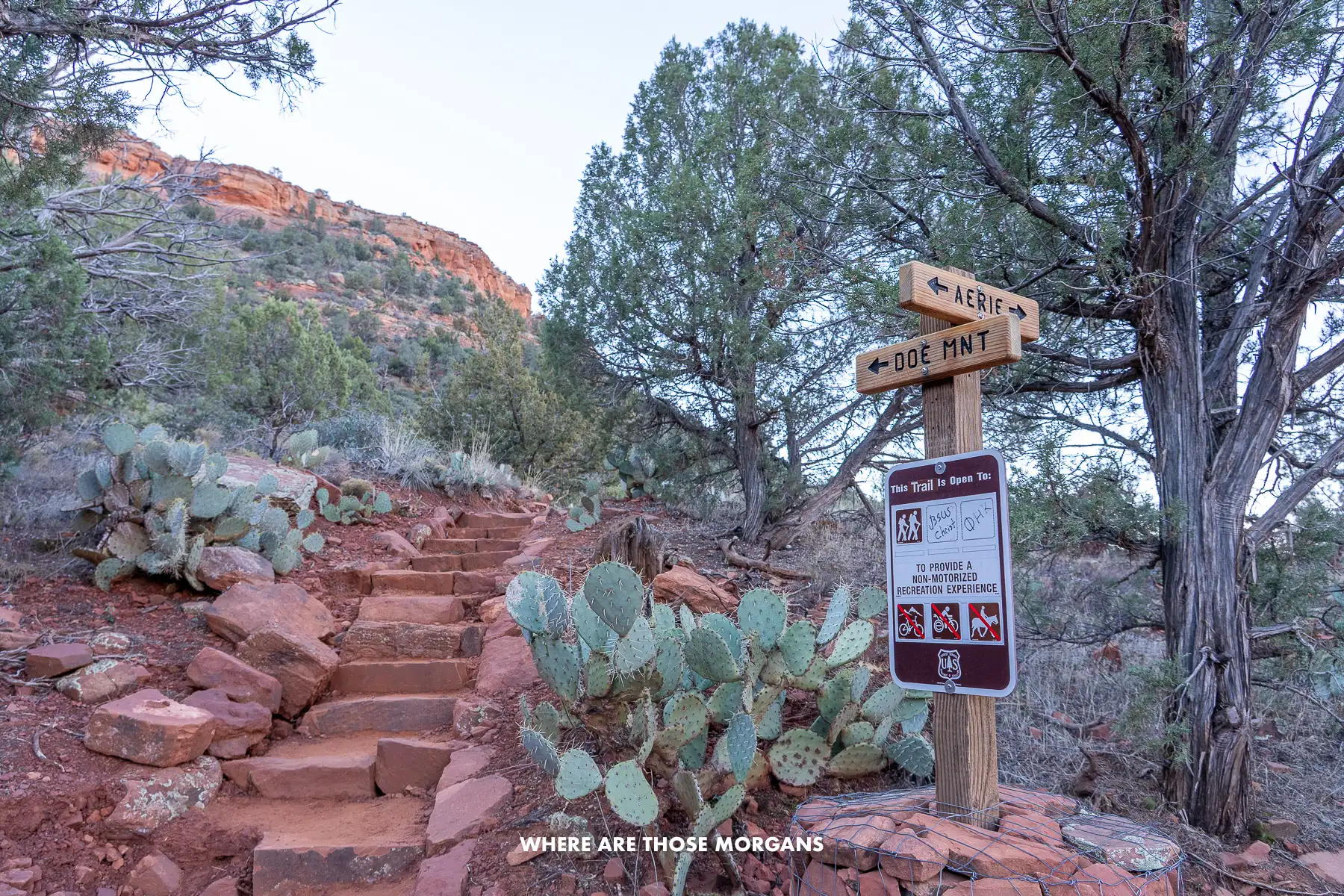
It was ice-cold and we weren’t feeling brave enough to take our warm winter coats off, so we hung our America the Beautiful Pass from our rear-view mirror, grabbed our backpacks and camera gear, put our hats and gloves on for extra warmth, opened the door and got slapped in the face by a rush of cold air.
2. Beginning The Climb
We started by following a very obvious path directly from the parking lot to the beginning of the trail. It was way too dark to see properly, so we used our headlamps to light the path ahead.
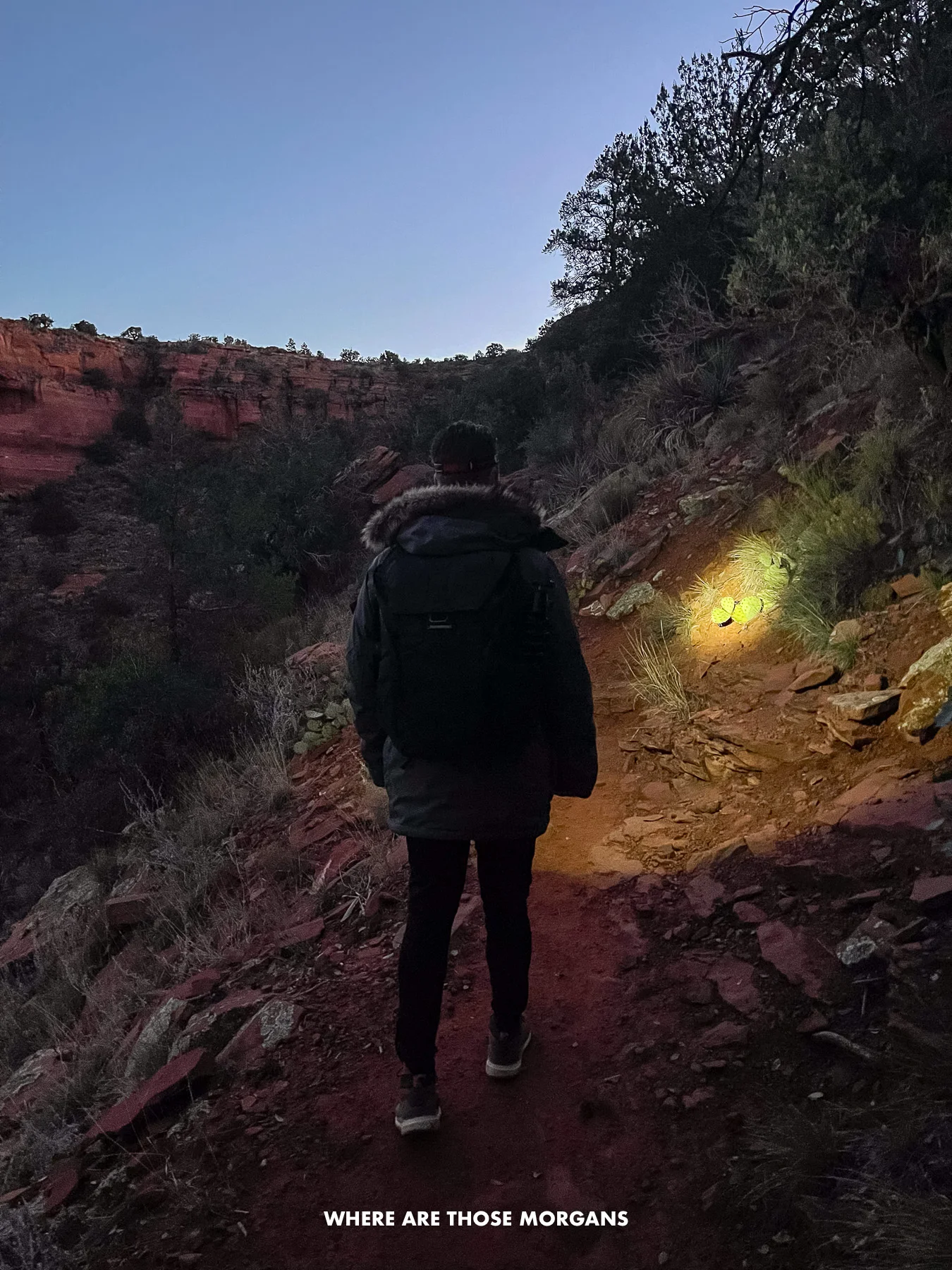
Tip: After parking, don’t cross to the opposite side of Boynton Pass Road from the trailhead lot because that trail leads to Bear Mountain, one of the hardest hikes in Sedona.
3. Zig-Zagging The Switchbacks
Almost immediately the trail hit a crossroads with the interconnecting Aerie Trail (which can be used to reach either Aerie Trailhead or Fay Canyon Trailhead as backup parking alternatives). We avoided turning left or right onto Aerie, instead continuing straight ahead aiming directly for the towering red rock formation in front of us.
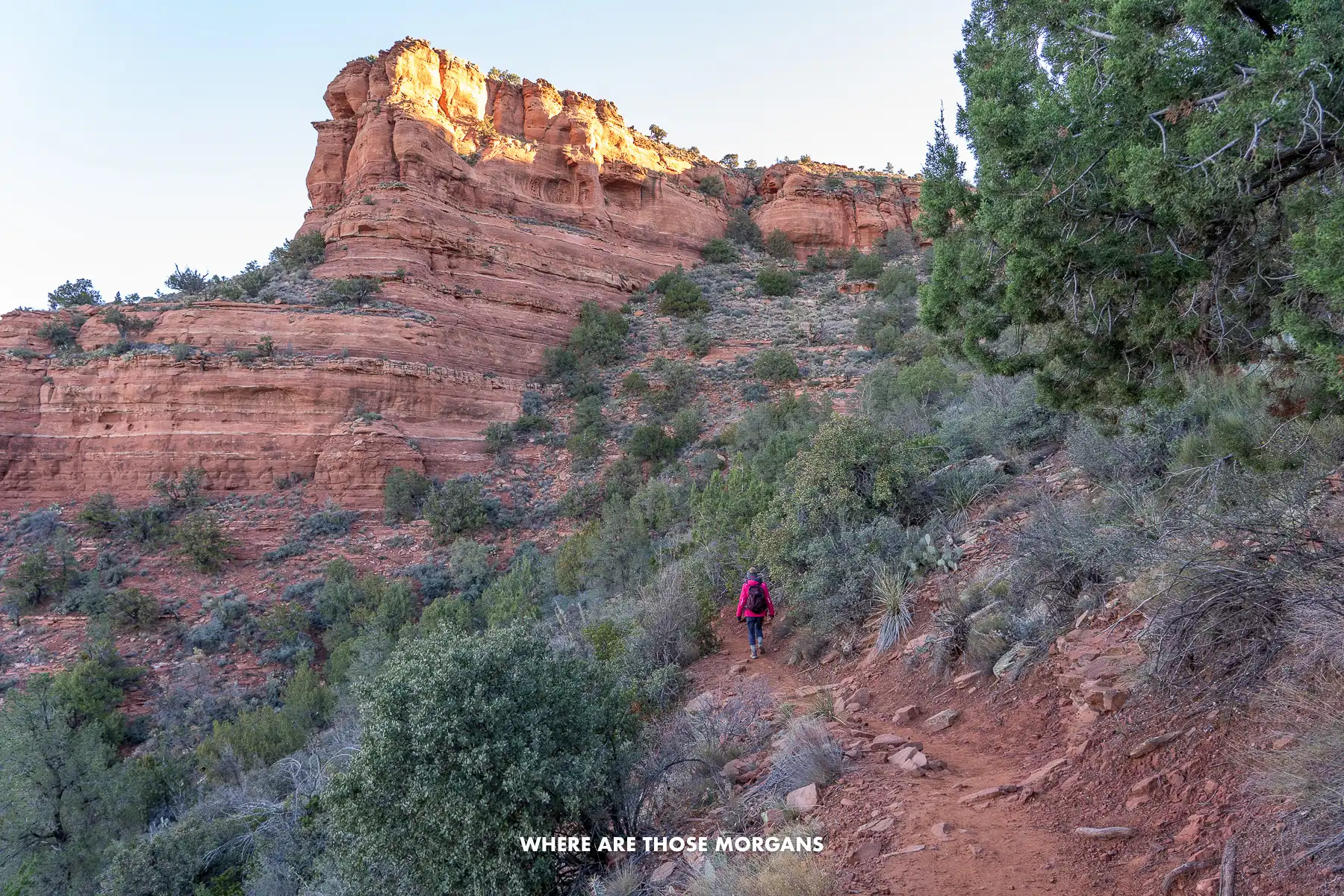
Next we began to gain elevation by zig-zagging up a series of switchbacks. The trail was easy enough to follow for the most part (even in the dark with headlamps), but it was surprisingly narrow in places and parts of the trail consisted of uneven rocks which would be slippery after rain or under icy conditions.
Need help planning your trip to Sedona?
Our Sedona travel guidebook gives you hidden gem hiking trails, secret caves, vortex sites, ancient ruins, wineries, jeep trails, photo spots, where to eat and stay, 1-5 day itinerary ideas and much more. Plus, you’ll get an exclusive map to use in Sedona!
View Guidebook
4. Following The Narrow Path
Each switchback was longer than the last and after 5 or 6 sharp turns we reached a long and narrow section of trail. The views to our left side were opening up nicely and we could see Bear Mountain in the distance dominating the skyline.
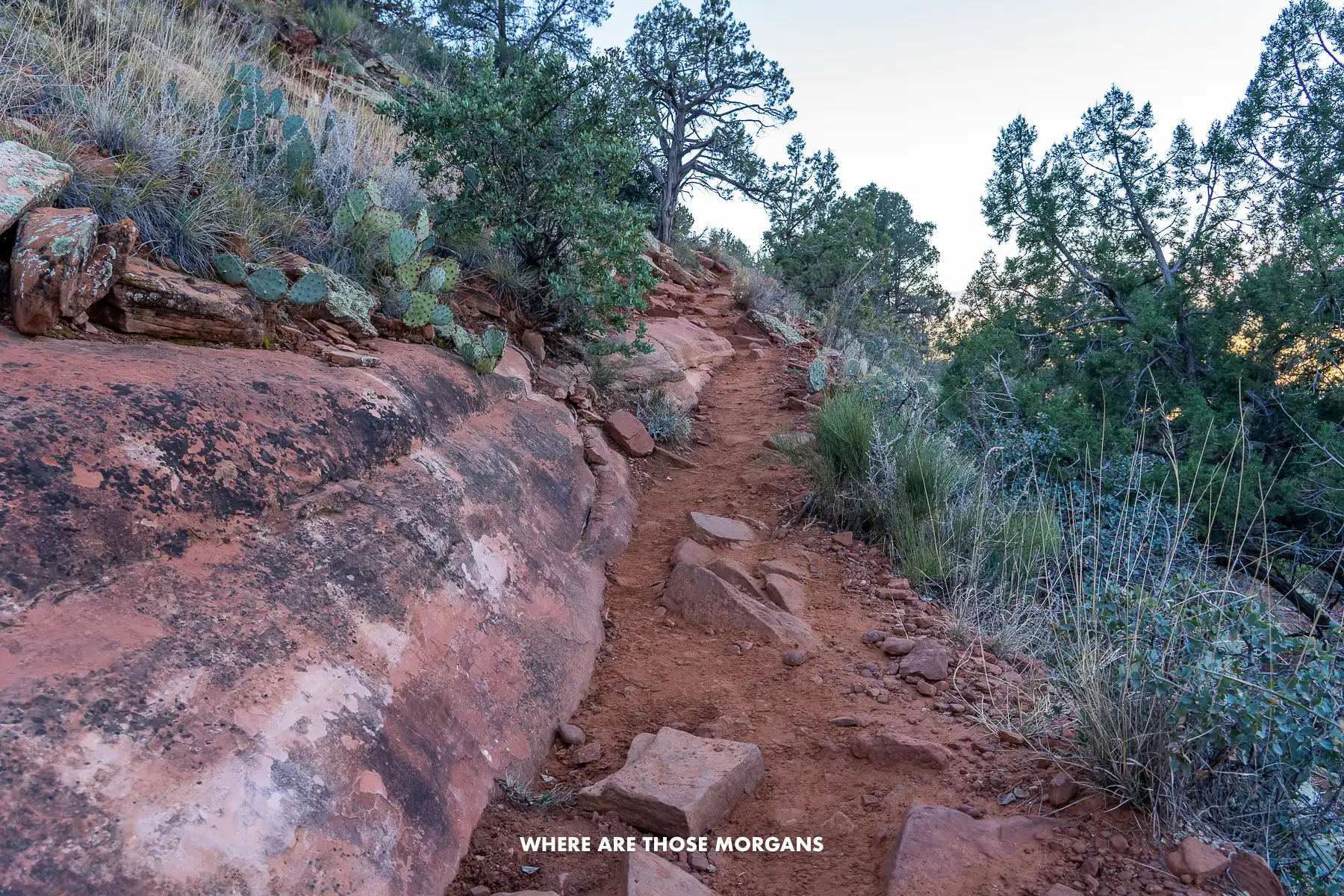
We continued to slowly and gradually gain elevation on this narrow part of the hike until reaching a very obvious rocky section which stopped us in our tracks.
5. Scrambling Up The Rocks
After taking a sharp right turn we arrived at a section of uneven rock ledges with a narrow gulley. Honestly, our photo above makes it look worse than it was in reality. We didn’t need to use our hands, but if you’re not feeling too confident with the light scramble, you can always lean forward and put your hands down for added stability.
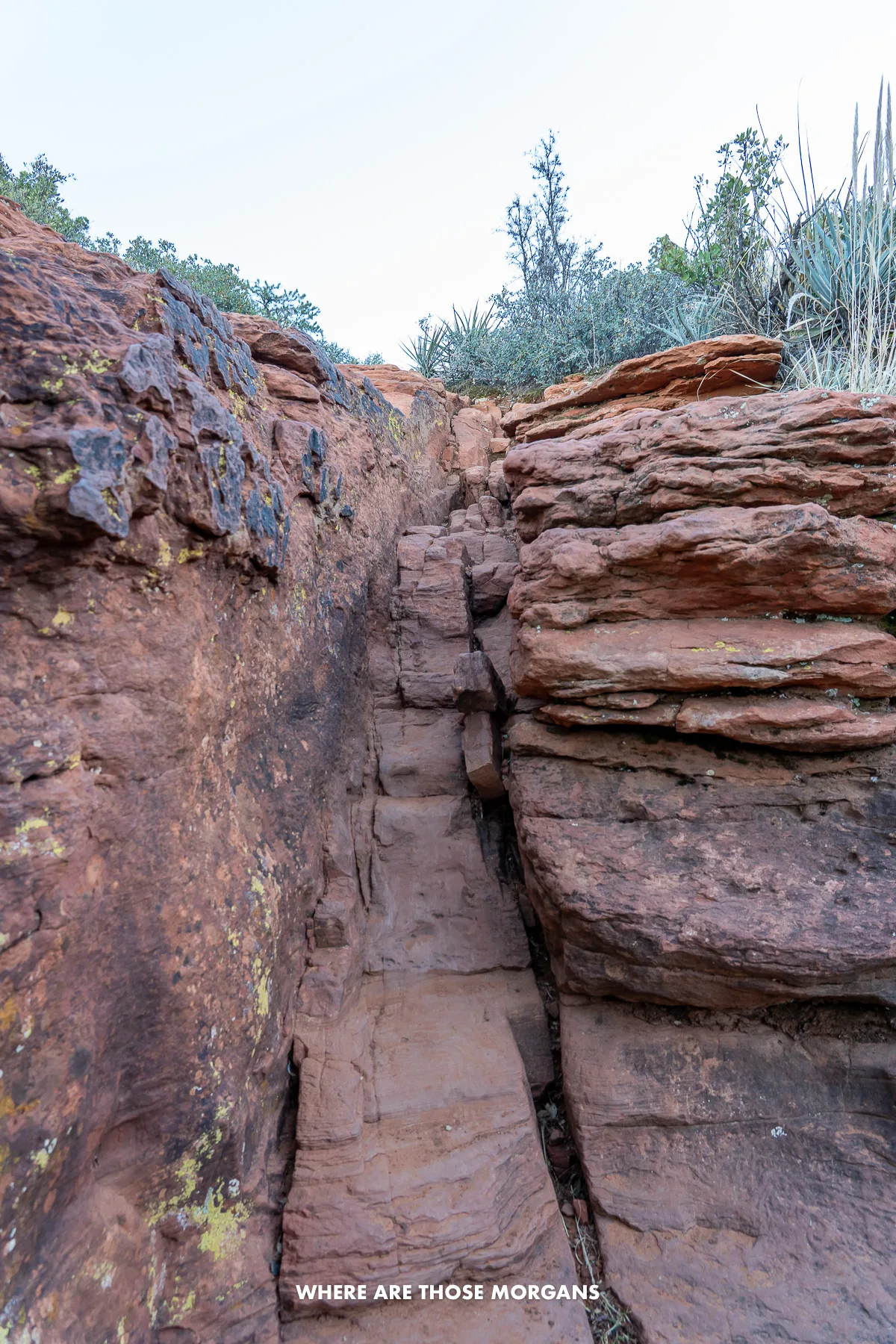
We were glad to be wearing our bulky and robust hiking shoes with good grips to hike up to Doe Mountain because of this section in particular. If it had rained or it was icy, we could have been in trouble without solid shoes.
6. Summiting The Flat Mesa
Right after the short scramble we summited onto a large flat table-top mesa. It was much bigger than we expected and there was still a little bit of walking involved in order to reach the southeast-facing sunrise viewpoint.
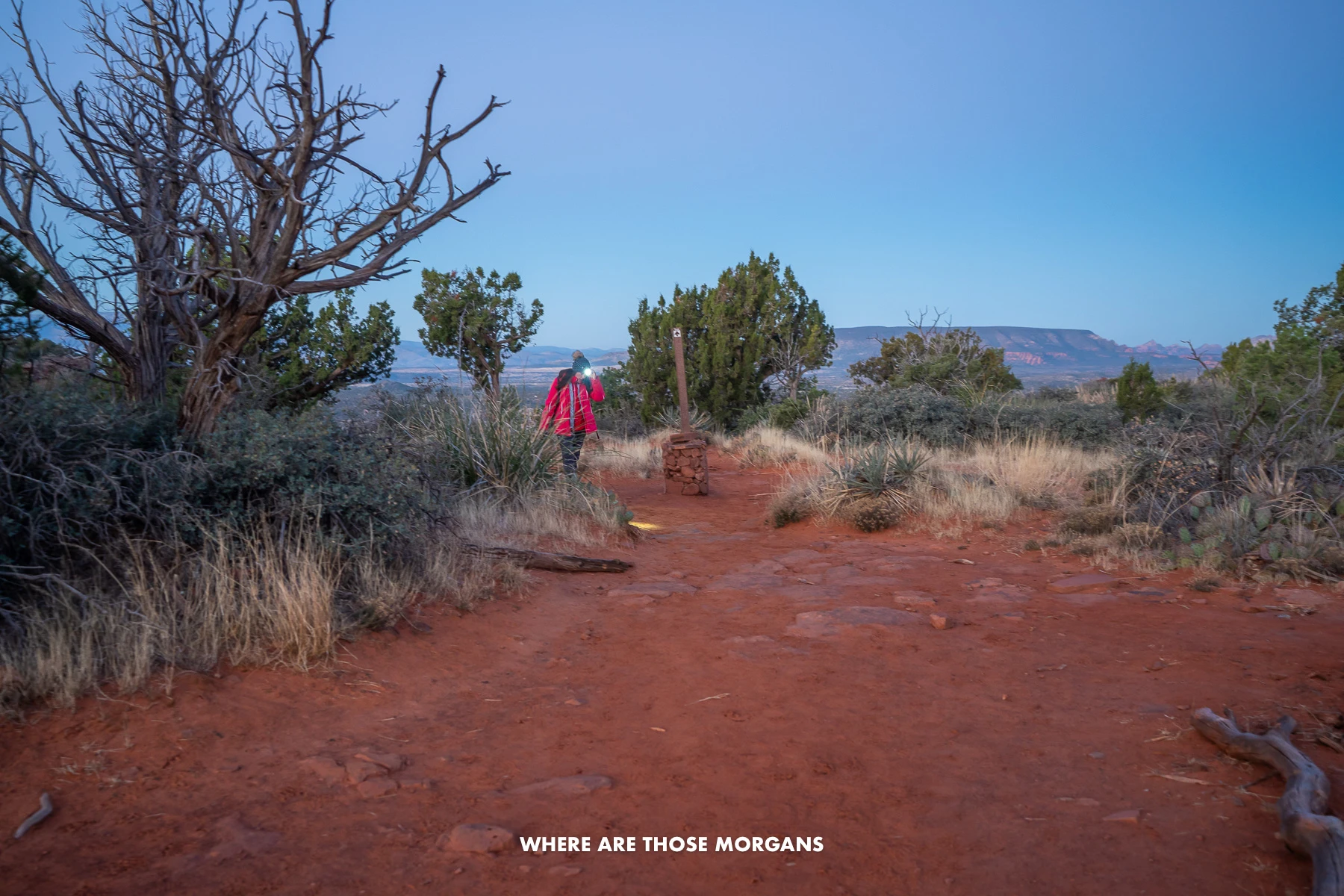
We almost turned left towards a protruding rock formation we’d been looking at since beginning the hike, which seemed like the logical place to go. Instead, we used the compass app on Mark’s phone and walked southeast through vegetation, following cairns and the brightest light on the horizon because the sun was about to rise.
7. Reaching The Viewpoint
After just a few minutes we reached the edge of the mesa, which had a surprisingly significant drop-off. For whatever reason, we just hadn’t thought about this hike ending at the top of a massive cliff. If you’re hiking as a family with younger kids, take extra care with them as you get closer to the viewpoint.
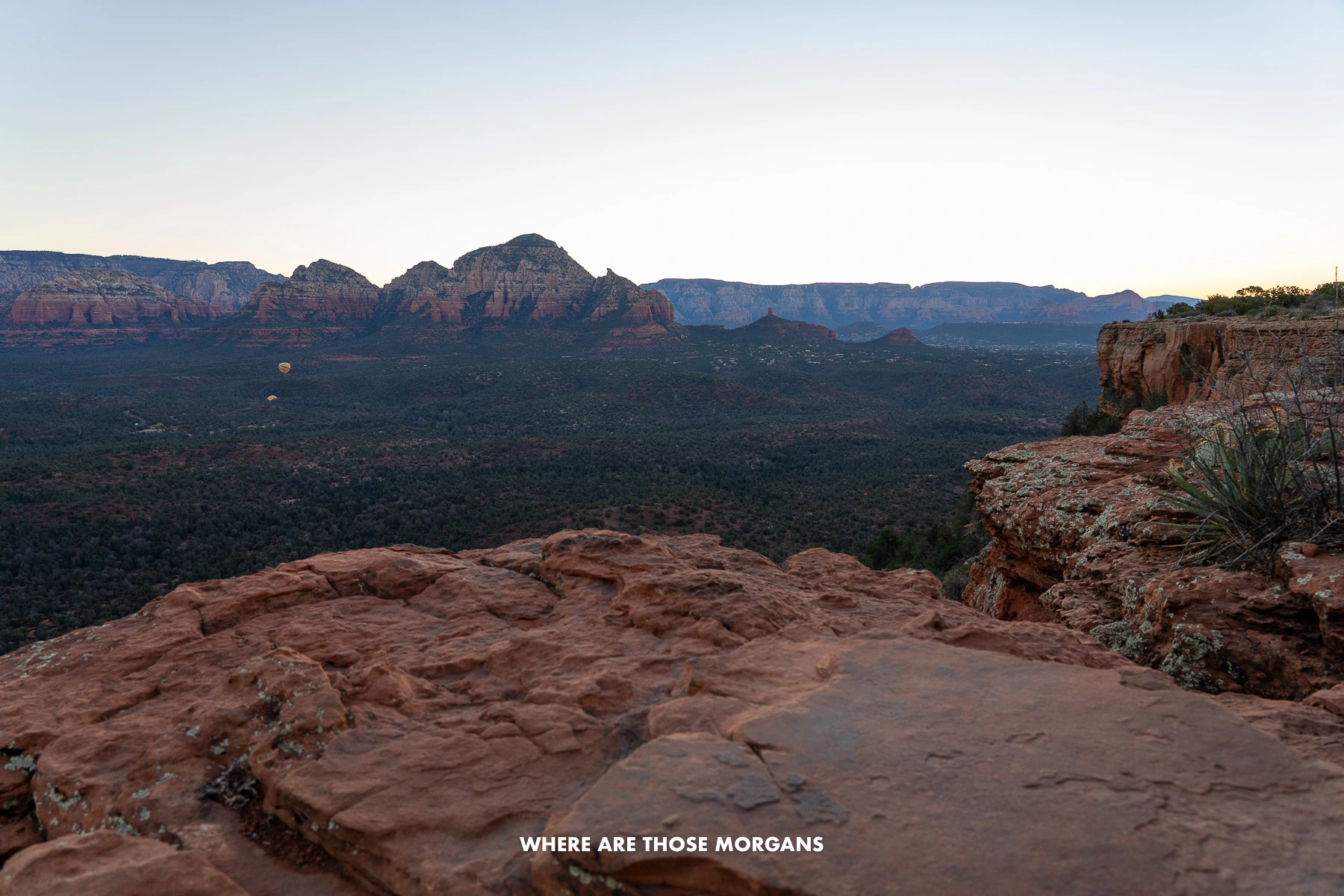
We walked until a few feet from the edge, picked a spot to set our gear down and immediately started snapping photos of sensational views over an unspoiled valley below and distant red rock formations with sunlight glowing brightly behind. Kristen pulled out our coffees and snacks while Mark found new perspectives to shoot photos.
Geography: In the center of our photo above you can see the tiny distant spire of Chimney Rock, and to the right you can see the faint ridge of Sedona Airport Mesa.
8. Watching Hot Air Balloons Take Off
Luckily, we summited early enough to watch as bright yellow hot air balloons emerged from the ocean of green trees below us about 30 minutes before sunrise. We ended up seeing these hot air balloons take off most mornings from other sunrise hikes or jeep trails we drove but Doe Mountain had the best vantage point.
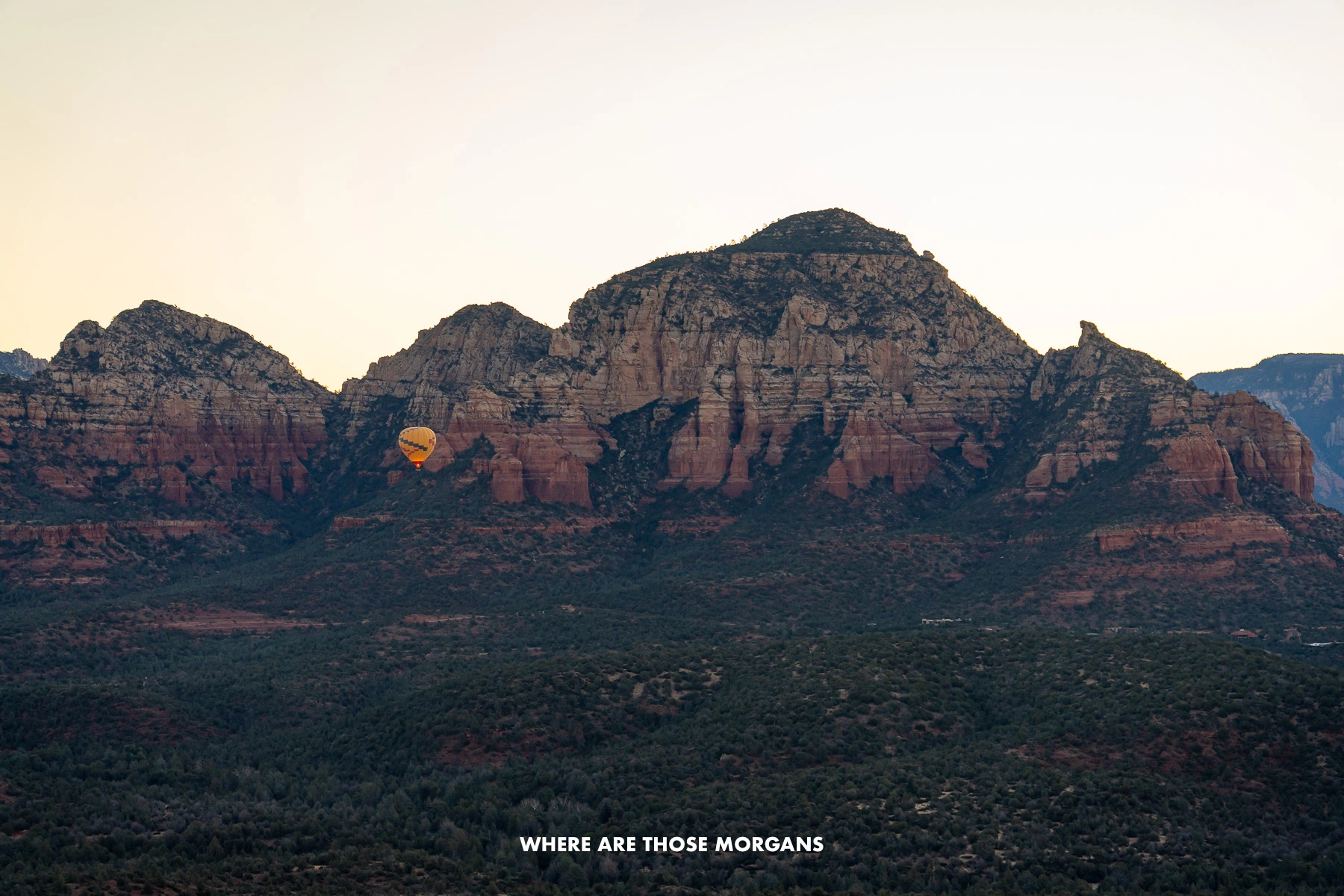
We didn’t make it up in a hot air balloon during our trip, but we’re sure it would be well worth the early start and we’d definitely consider it for next time.
9. Enjoying The Sunrise
After watching balloons take off, drinking hot coffee and eating snacks, the sunrise finally erupted from behind Sedona’s tall eastern red rock cliffs and it was genuinely amazing. We enjoyed totally unobstructed views across the valley below all the way to the point of sunrise.
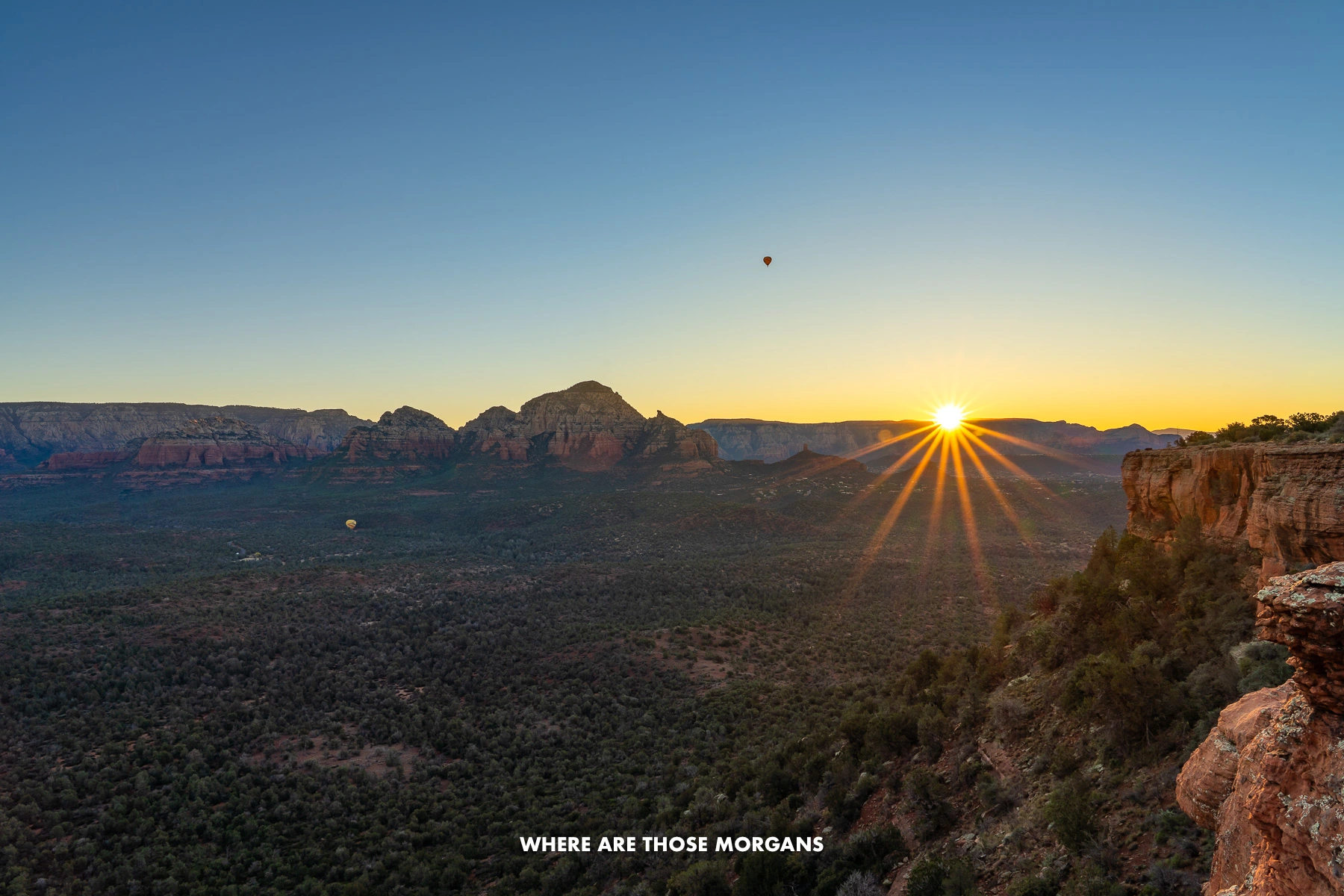
It was nice to feel a bit of warmth hit our cold faces, and the mesa we were sat on started glowing a deep red color which was perfect for photography. We quickly put our drone up to get a few more photos from a different perspective, before walking back across the mesa ready to leave.
10. Hiking Back Down
We had tons more hikes planned for the day so we didn’t hang around. Another hiker was coming up the rugged rocky section as we were going down, but it was the only other person we saw on the whole hike. Our descent was all in shadow so the cold set back in, but it only took us around 15 minutes to get back to the parking lot.
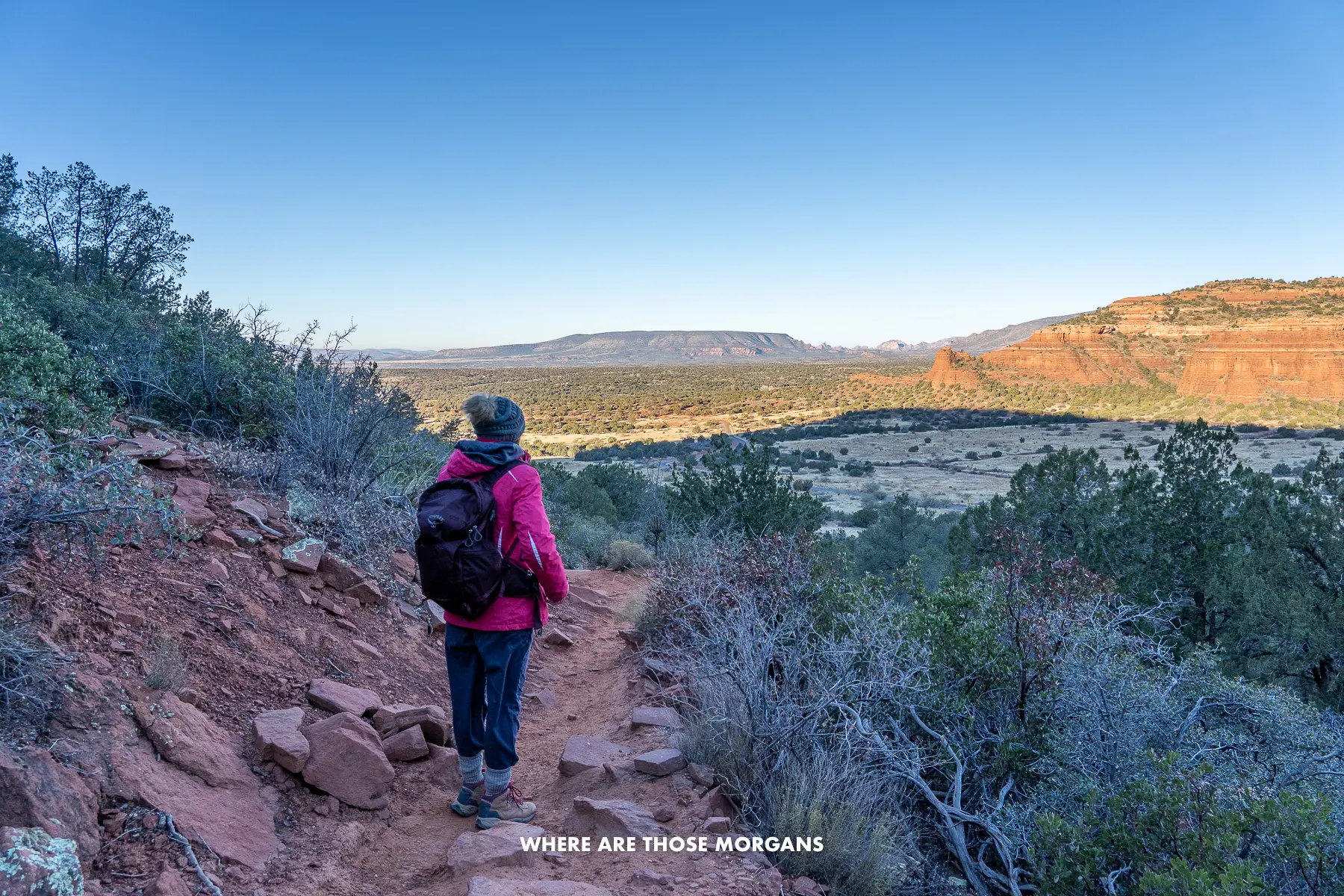
Ahead of us and glowing under sunlight was the mighty Bear Mountain, but we didn’t have 4 hours spare to hike it. Instead we went straight to Boynton Canyon Trailhead parking area to beat the crowds heading for the famous Sedona Subway Cave. After that we hiked Fay Canyon Trail and finally the Birthing Cave.
Pros And Cons
Pros ✅
- Spectacular views
- One of the best sunrises
- Quieter than other hikes
- Short trail with huge reward
- Backup parking options
- Lots of room at summit
Cons ❌
- Relatively steep climb
- Very narrow path
- One light scrambling section
- Not the most exciting trail
Trailhead Parking
The Doe Mountain Trailhead shares a relatively large, horseshoe-shaped parking lot with the Bear Mountain Trailhead (you can find the exact Google Maps location here). We counted 25 designated spaces inside the main U-shape.
When we arrived at 6:30 AM for our sunrise hike in December, we snagged the first spot. Crucially, when we drove by again around 11:00 AM later in the week, the difference was striking – all 25 spaces were full and cars were backed up all the way down Boynton Pass Road.
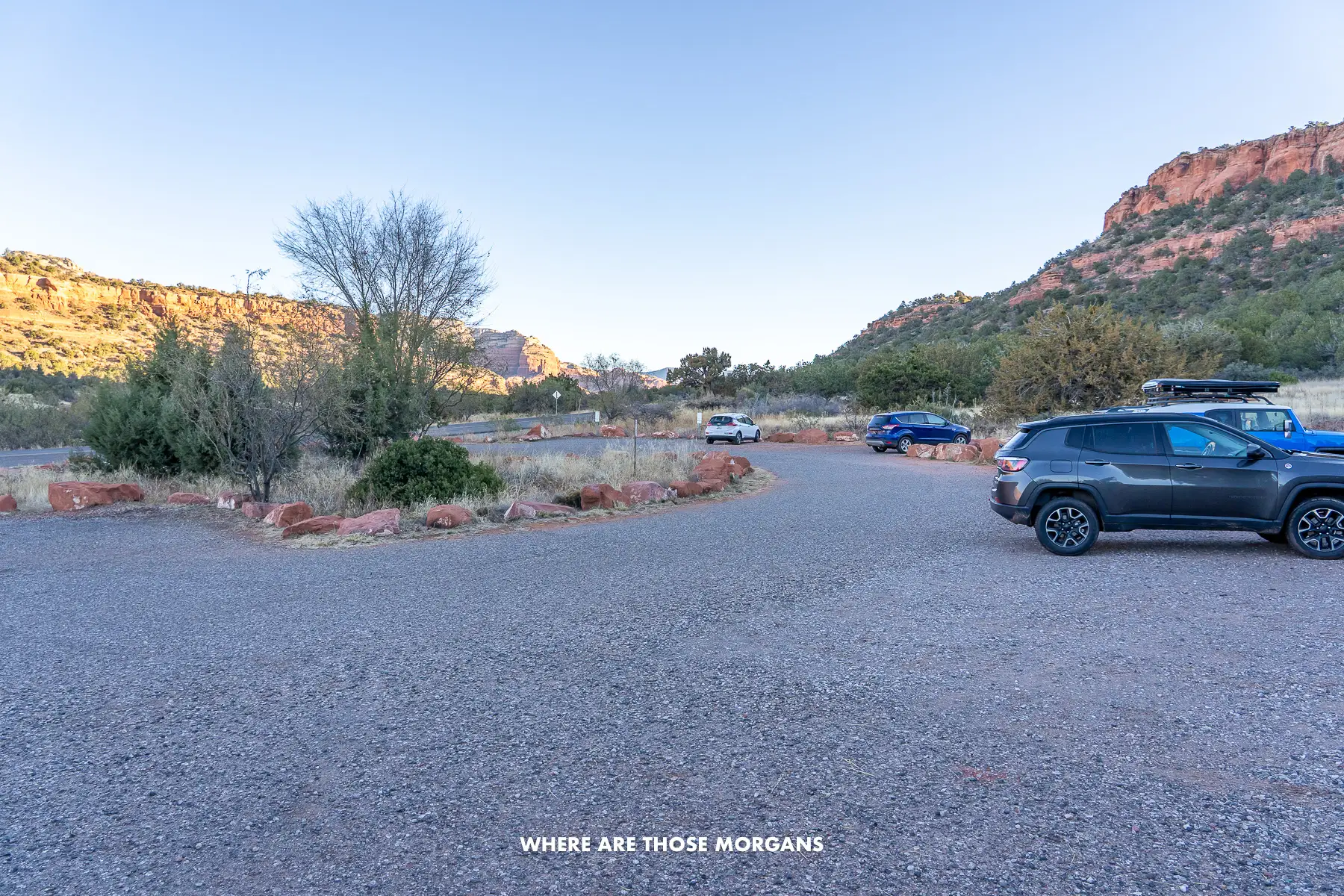
Our best advice: If you hike anytime after 8:00 AM, you’re risking full parking lots and frustrating extra walks on connecting trails from backup parking areas. Hiking for sunrise not only guarantees a spot for Doe Mountain, but it also frees you up to drive straight to your next hike before that lot fills up too. And you get to watch a magnificent sunrise, so it’s multiple wins in one hit, just for waking up early.
Backup parking options: If Doe Mountain Trailhead is full and the roadsides are jam-packed, try parking at Fay Canyon Trailhead (here’s the Google Maps location) or Aerie Trailhead (here’s the Google Maps location).
Pre-Hike Preparation
Sunrise: We made sure to check sunrise times and aimed to be at the parking lot one hour before sunrise (arriving at 6:30 AM, summiting at 7:00 AM and waiting for the sun to rise at 7:24 AM). Having headlamps to illuminate the path was so much easier and better than using the flashlight on our phones for our climb.
Layering: The mornings were very cold during our trip in December, so we hiked in coats, gloves and hats. Around half way up we did have to take our coats off because it was challenging enough for us to work up a sweat despite the cold, but we put them back on as soon as stopped at the summit.
Footwear: Footwear with good traction helped us get up the scrambling section near the top with no slipping. Kristen wore Columbia boots and Mark wore Adidas Terrex, both of which have deep grips.
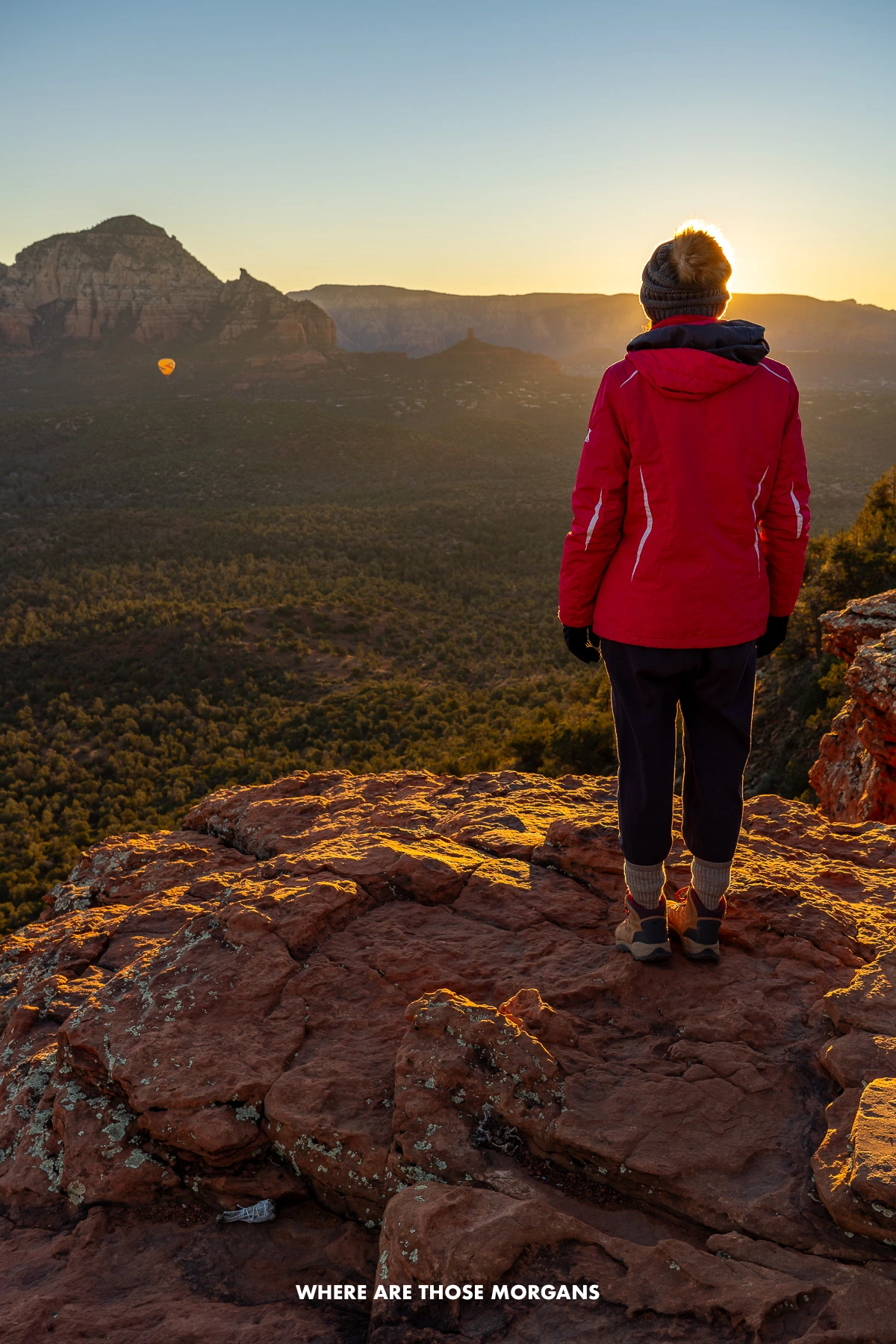
Etiquette: When hiking in Sedona it’s crucial to always practice the seven principles of Leave No Trace to preserve natural beauty so others can enjoy the same environments.
Water: It was sunrise in December so we only carried one full bottle of water between the two of us, along with a flask of hot coffee and some breakfast snacks. But even though it’s a short trail, we’d still take plenty of water each if we hiked it on a hotter day.
Photography: We carried our camera, tripod and drone but to be honest we ended up mostly just enjoying the sunrise without being too serious about getting photos. One thing we wish we did was set up a time-lapse of the sun rising.
Our Final Verdict: Is Doe Mountain Trail Worth The Early Alarm?
Watching a spectacular sunrise from Doe Mountain was definitely one of our favorite Sedona experiences. The hike was short, easy enough and led to an elevated vantage point with majestic views over the surrounding desert landscape.
We would definitely hike it again, and we’d do it at exactly the same time of day. Our only change would be hiking it on a warmer morning so we didn’t have to huddle up in our heavy coats.
Top 3 Actionable Takeaways:
- Set an early alarm: Trust us, it’s well worth waking up early to see the sunrise from Doe Mountain.
- Take breakfast: Having coffee and breakfast snacks was a game changer for us at the summit.
- Combine trails: Heading for the Subway Cave and Fay Canyon straight after ticked off three hikes in one area.

Next Steps
We hope our Doe Mountain sunrise hiking guide helps with planning your trip to Sedona.
Don’t forget you can book a travel planning video call with us if you’d like our expert help organizing your trip to Sedona. We can answer any questions you have or walk through a personalized itinerary to make the most of your time.
Still researching for your trip?
- What to know about a first trip to Sedona
- Here are the top things to do in Sedona
- Here’s exactly where to stay in Sedona
- These are the unmissable hikes in Sedona
- Here’s our 1-5 days in Sedona itinerary
- This our ultimate 7-day Sedona itinerary
Finally, if you’ll be visiting more places on the same trip, we recommend reading our Arizona travel guide for more helpful tips and advice.
Happy Travels,
Mark and Kristen
Find this guide helpful? Pin it for later!


All Rights Reserved © Where Are Those Morgans, LLC. Republishing this article and/or any of its contents (text, photography, maps, graphics, etc.) in whole or in part is strictly prohibited.

